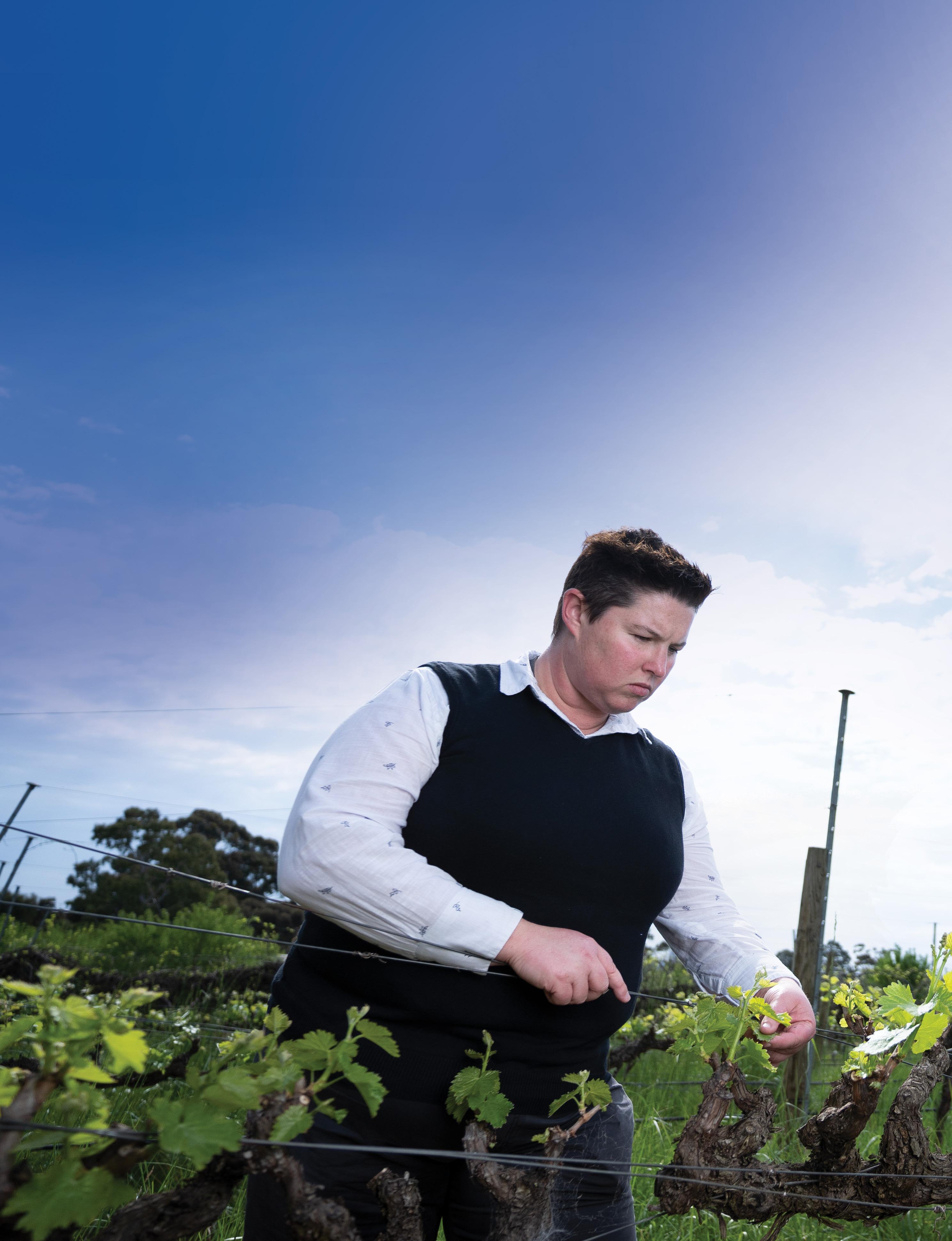
3 minute read
Targeting taint
AGRICULTURE, FOOD & WINE
targetingtaint
Advertisement
Vision of the wholesale destruction to life and property wrought by the Australian bushfires of 2019-20 shocked the world. But for some of our winemakers, the fires’ most damaging impacts were inflicted on assets left standing.
Right: Professor Kerry Wilkinson
Where smoke-exposed grapes were rendered incapable of producing wine without unpalatable smoky and ashy characters, fruit went unharvested—and an entire vintage was lost. To put the issue in financial perspective, 2007 bushfires affecting the state of Victoria alone caused smoke-taint losses in excess of AUD$100 million. The 2019-20 blazes spanned prominent wine regions in Victoria, New South Wales, South Australia and the Australian Capital Territory. Although still not fully known, their economic toll could feasibly approach half a billion dollars. Recognising the urgent need for action, the Australian Government has invested heavily in a major collaborative industry-university research project to develop new smoke-taint-management tools and strategies for the Australian wine industry. The University of Adelaide is taking the scientific lead. “This is an incredibly important project,” says head researcher Professor Kerry Wilkinson, “not just for our domestic wine industry’s sustainability, but for those in fire-affected wine regions all over the world, including the US, Canada, South Africa and Chile.” Much of the biochemistry underlying smoke taint has been established over the last decade, in many cases by Wilkinson herself. The way in which smoke affects grapevine physiology, and the composition and sensory properties of grapes and wine, is all well understood. Now, the University’s team, collaborating closely with the project’s industry lead, Cassegrain Wines, and research partners at the Australian Wine Research Institute and international technology companies Ligar and VA Filtration, is taking the next step: applying the science to overcome the problem. According to Wilkinson, numerous promising innovations are being pursued. “One direction we’re taking will evaluate novel technologies for removing smoke taint compounds during winemaking, such as Ligar’s molecularly imprinted polymers. This builds on a previous project that I was involved in1, in which we demonstrated the use of membrane filtration and adsorbents to mitigate the intensity of smoke aromas and flavours in wine made from smoke-exposed grapes.”
Methods will also be explored for rapidly quantifying grapes’ levels of smoke taint, to enable accelerated decision-making during vintage. “We’re developing new analytical tools of our own for monitoring grapevines’ real-time smoke exposure,” continues Wilkinson. “This again builds on some of my previous work2, which demonstrated the use of a commercial sensor that measures particulate matter as a way of monitoring vineyard smoke exposure.” Finally, the team will investigate alternative uses for wine that retains its smoke taint, such as distillation for use in spirits. With the incidence of bushfire predicted to increase as a result of climate change, and many Australian producers already struggling to cope with drought, the magnitude of the situation is not lost on Wilkinson.

1Fudge, A, Ristic, R, Wollan, D, Wilkinson, K 2011, Amelioration of Smoke Taint in Wine by Reverse Osmosis and Solid Phase Adsorption, Australian Journal of Grape and Wine Research, 17, S41-S38 2Szeto, C, Ristic, R, Capone, D, Puglisi, C, Pagay, V, Culbert, J, Jiang, W, Herderich, M, Tuke, J, Wilkinson, K 2020, Uptake and Glycosylation of Smoke-Derived Volatile Phenols by Cabernet Sauvignon Grapes and Their Subsequent Fate during Winemaking, Molecules, 25, 3720
KEY ACHIEVEMENTS
University of Adelaide research is developing new tools and strategies to help grape growers and winemakers avoid, or mitigate, smoke taint. Lost production due to smoke taint following the 2019-20 Australian bushfires could approach half a billion dollars (AUD). The risk of bushfires, and therefore smoke taint, is expected to increase with climate change.










